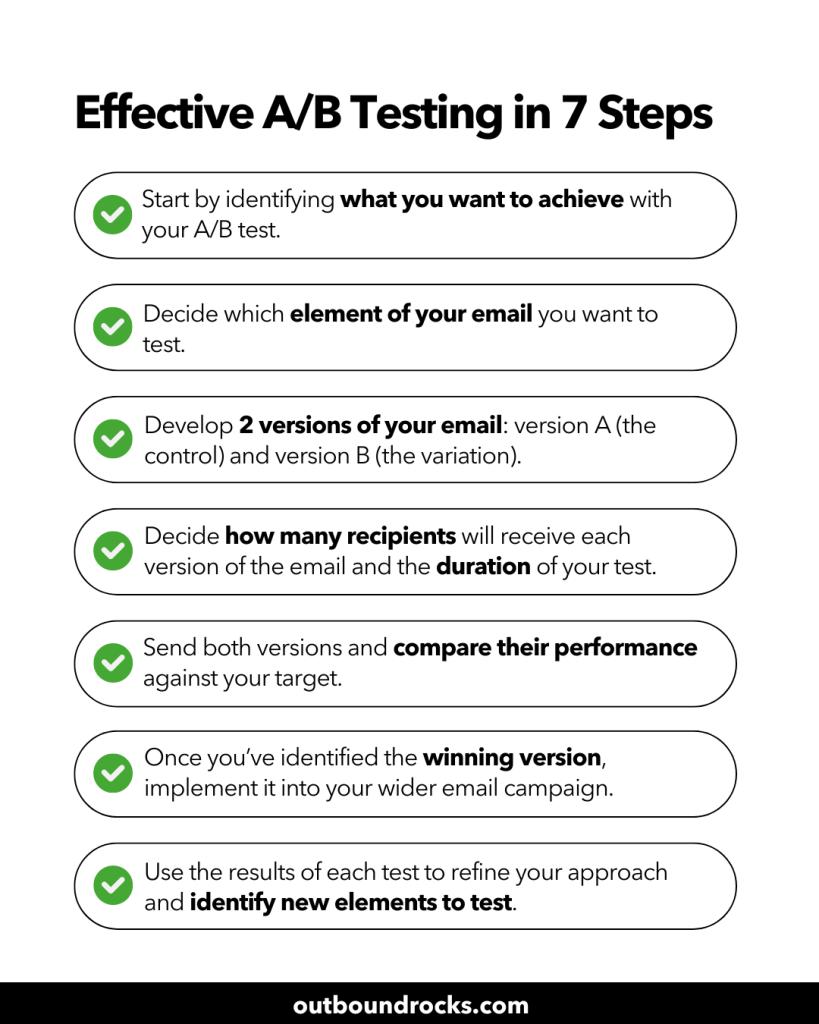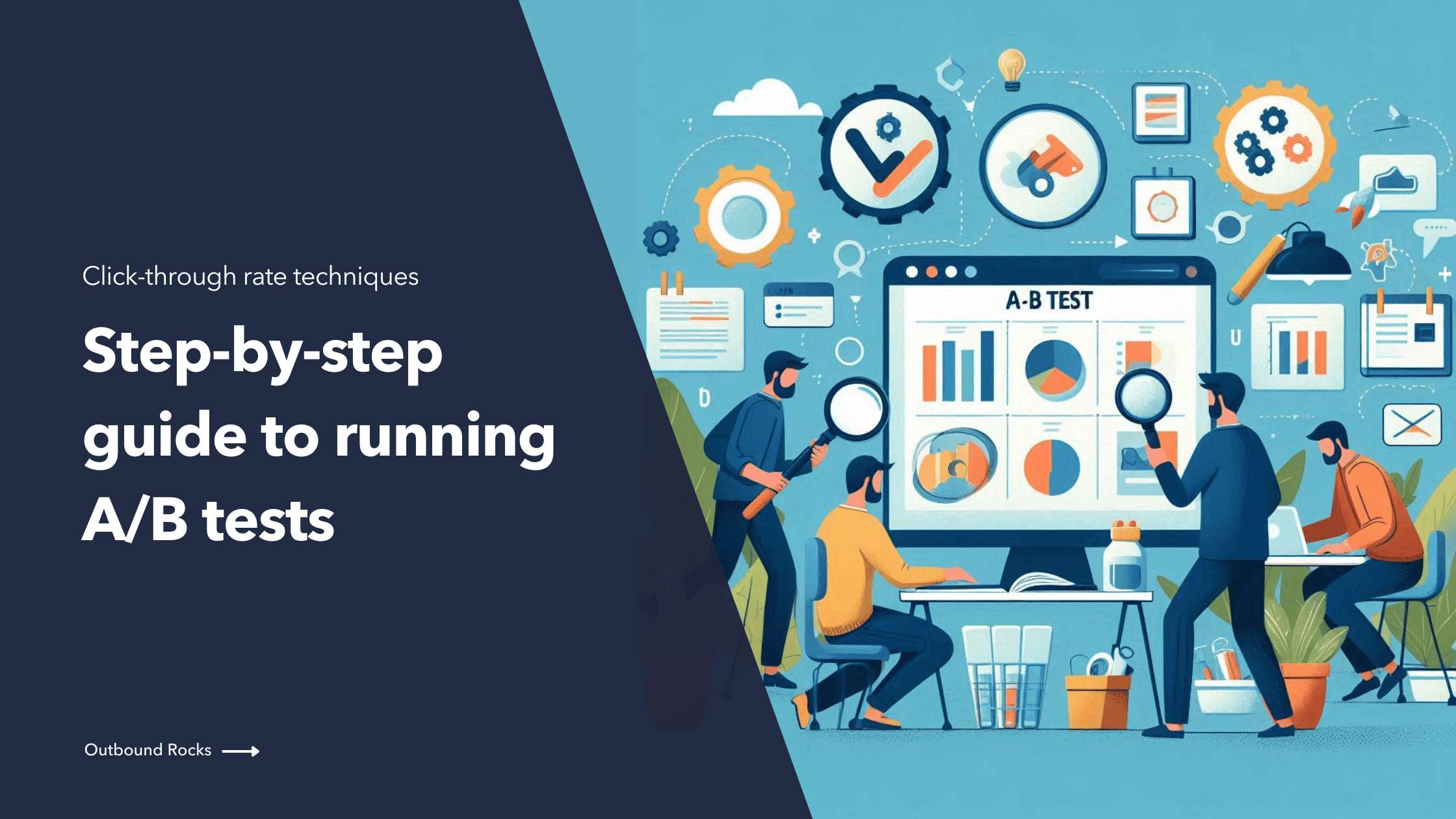Are your email campaigns hitting the mark? If not, A/B testing is a powerful way to fine-tune every aspect of your emails, from subject lines to CTAs, to ensure your efforts are delivering real, measurable results.
In this article, we’ll take you step-by-step through the process of conducting effective A/B testing, so you can optimise your email marketing strategy with confidence.
Whether you’re just starting out or looking to improve your approach, you’ll discover actionable insights to improve your campaigns.
Ready to make data-driven decisions that drive engagement and conversions? Let’s dive in!
TABLE OF CONTENTS
– What is A/B testing?
– Effective A/B testing in 7 steps
– Advanced tips for interpreting A/B test results
– Conclusions
What is A/B testing?
A/B testing, also known as split testing, is a method of comparing two versions of a marketing asset – such as an email, web page or ad – to see which performs better.
In an A/B test, you create two variations (version A and version B) that differ in a key element, such as a subject line, CTA, image or layout. These variations are then presented simultaneously to different segments of your audience under the same conditions.
The primary goal of A/B testing is to determine which version results in higher engagement or conversion rates.
Effective A/B Testing in 7 Steps
Now that you’ve learned what A/B testing is and why it’s an essential tool for optimising your email marketing campaigns, it’s time to put that knowledge into action.
Conducting A/B testing may seem straightforward, but to truly unlock its potential, you need a clear and methodical approach.
Here are the 7 essential steps to effective A/B testing:
1. Define your goal
Start by identifying what you want to achieve with your A/B test. This could be to increase click-throughs, improve open rates, increase conversions or any other specific goal.
A clear goal will help you decide which element to test and how to measure success.
2. Choose the element to test
Decide which element of your email you want to test. Common elements include subject lines, CTAs, images, email layout, or email copy.
Focus on one variable at a time to ensure that any changes in performance can be attributed to that specific element.
3. Create variations
Develop 2 versions of your email: version A (the control) and version B (the variation). The only difference between these versions should be the element you’re testing.
For example, if you’re testing the subject line, everything else in the email should remain the same.
4. Determine your sample size and test duration
Decide how many recipients will receive each version of the email. Your sample size should be large enough to produce statistically significant results.
Also determine the duration of your test; it should be long enough to collect sufficient data without being influenced by external factors such as seasonal trends.
5. Run the test and analyze results
Send version A to one segment of your audience and version B to another, ensuring that both groups are similar in size and characteristics.
After the test, analyse the results by comparing the performance of each version against your target.
Look for statistically significant differences that indicate which version is more effective.
6. Implement the winning variation
Once you’ve identified the winning version, implement it into your wider email campaign.
Use the lessons learned to inform future testing and continually optimise your email marketing strategy.
7. Iterate and refine
A/B testing is a continuous process. Use the results of each test to refine your approach and identify new elements to test.
Continuous iteration allows you to improve your email campaigns over time.

Advanced tips for interpreting A/B test results
Interpreting A/B test results is more than just pinpointing the winning variation—it’s about uncovering deeper insights that can significantly impact your marketing strategy.
At Outbound Rocks, we’re constantly running tests to refine our campaigns, and we’ve gathered some advanced tips that can help you do the same:
- Understand statistical significance
- Analyse secondary metrics
- Consider audience segmentation
- Consider external factors
- Look for patterns over time
- Test for interactions between variables
- Evaluate long-term impact
By incorporating these advanced tips into your analysis, you can gain deeper insights from your A/B tests and make more strategic decisions that enhance your overall email marketing efforts.
Remember, the goal is not just to identify a winner, but to understand why it won and how you can apply those learnings across your campaigns
Conclusions
Incorporating A/B testing into your email marketing strategy is essential for optimizing performance and driving better results.
By following the steps outlined in this guide, you can make informed decisions that enhance your campaigns and connect more effectively with your audience.
Ready to take your email marketing to the next level? Try Outbound Rocks to streamline your A/B testing and outreach efforts, helping you achieve even greater success with data-driven insights and powerful automation tools.
Visit Outbound Rocks to learn more and start optimizing your campaigns today.
